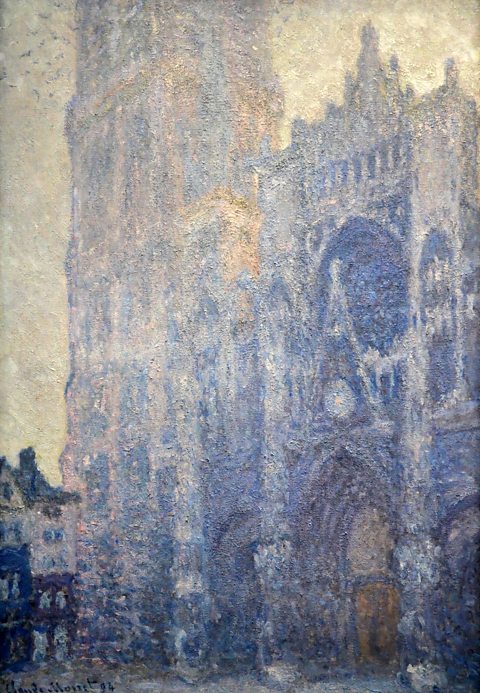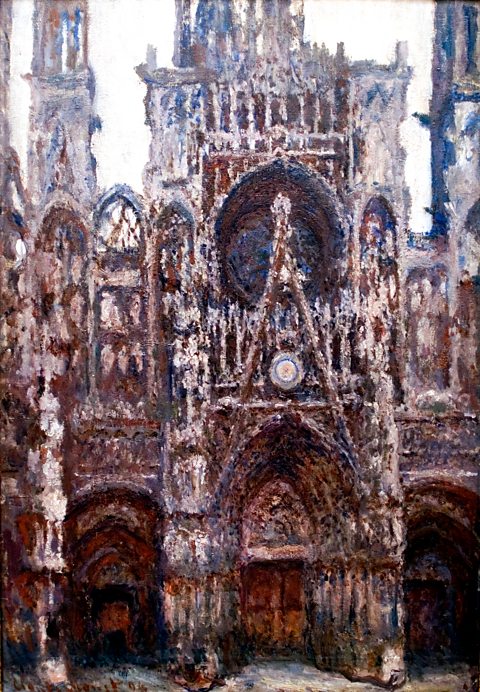Texture and technique
Rather than accurately copying the appearance of their subject, many artists use texture to show their technique and to express emotion.
Vincent Van Gogh created many heavily textured artworks. In Noon (The Siesta, After Millet) (1890) he used thick application of oil paint in an expressive manner. This creates an artwork that has a rough texture as well as a raised surface.

Applying thick areas of paint on a canvas like this is known as impasto. This layered, thick paint creates a visual effect that allows you to see the individual brushstrokes the artist has used.
The thick brushstrokes follow the shapes and forms of the objects and people - creating a sense of movement in the painting.
Van Gogh also used the impasto style to reflect feeling and emotion, especially within his self-portraits.
Claude Monet used the impasto technique to describe the texture and light of his subjects.
In his series of paintings of Rouen Cathedral he changed his technique to show different light conditions.


In the painting on the left (1893) paint is applied is expressive but light brushstrokes suggesting hazy shapes in the dim light of early morning or evening.
In the painting on the right (1892) thick dabs of paint build up more definite texture. This gives a more detailed idea of the forms of the building as seen in full daylight.